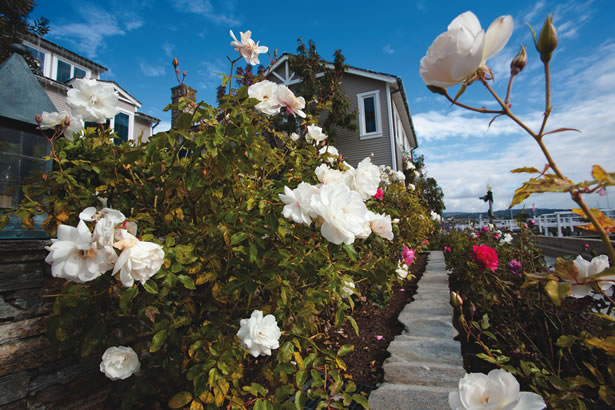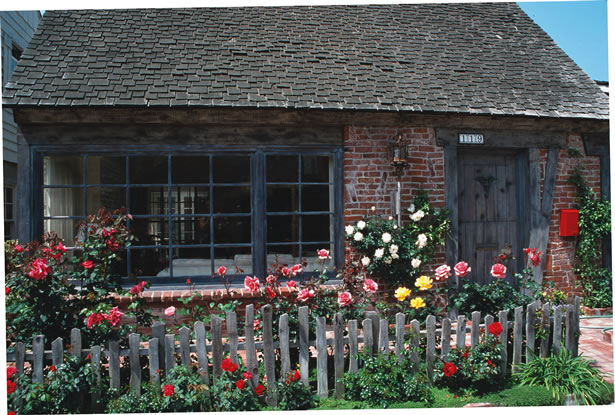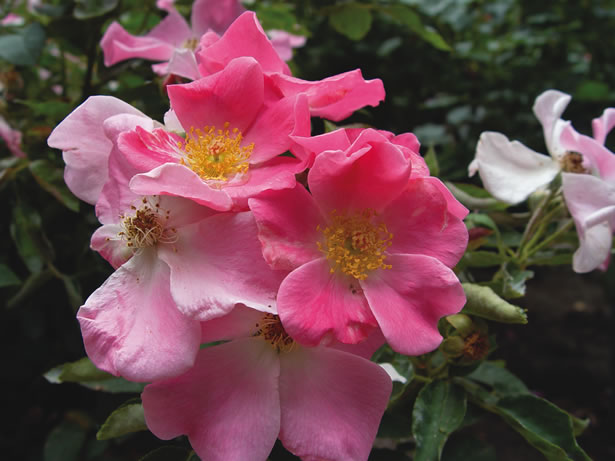Newport Island Roses
Newport’s island of roses has come alive in recent years as new disease-resistant flowers have flourished.- By Maureen Gilmer
There is a quiet renaissance down on Balboa Island. Along the gemstone-named streets this fall, it was clear something was going on with the roses. Decades ago, in the dawn of the 1980s, I was a residential gardener who witnessed the struggles of the island’s flowers and fought tirelessly to keep my customer’s old hybrid tea roses flourishing.
In those days, residents on the island were dyed-in-the-wool rose lovers, determined to keep their full-bloomed gardens floriferous and free of diseases that plagued the area. I worked with many clients, keeping black spot and mildew at bay. These disfiguring diseases crippled the island’s flora and fauna, brought on by the beach’s moist, warm air that created a perfect environment for the age-old enemies of the rose. Despite working even harder for beautiful blooms, roses were rare back then.
Now, a reawakening has brought about a new wave of lush green foliage and large flowers. This pas fall, the island was overflowing with heavily blooming roses; they were everywhere, growing bountifully despite an unusually cool, damp summer. Strolling along the streets of the island, I knew these were not the tea roses I once tended, but rather a whole new group that emerged within the last 20 years, bred to solve all the problems that once kept me employed.
Notoriously high-maintenance, the old hybrid tea roses of the ’80s required extensive pruning, with new seed pods forming quickly that slowed new bud production. They also failed to become fully dormant in the winter, requiring gardeners to strip the plant so that only the bare framework remained. The ugly canes stayed absent of flowers for weeks afterward, recovering slowly until it was warm enough for buds to form. Even with the warm beach climate, tea roses needed continual doses of chemical fertilizers to keep growth vigorous in the infertile, sandy island soil.
These new varieties have petals that fall cleanly, and thus need no pruning beyond trimming the occasional wayward sprig that won’t conform to the shape of the plant. They hold much of their foliage until the spring, when they require only a general shaping that can be done with a pair of hedge clippers. Chemical fertilizers may become a thing of the past—the new roses can even be grown organically because they don’t demand such high-powered food. In the island’s mild, frost-free climate, these new roses maintain resistance to moisture-born diseases and bloom nonstop for most, if not all, of the year.
They are loosely deemed shrub roses primarily because these plants produce such luxuriant foliage that they resemble ordinary, low-maintenance flowering shrubs. These roses can be planted wherever there is full sun along foundations—in flowerbeds and borders or to break up long fence lines.
A rundown of the best groups of new roses for Newport Beach gardens: Flower Carpet is the trade name of the first groundcover roses. With very glossy leaves and nine colors, these make fine shrubs that are ideally sized for smaller coastal properties. There are endless combinations to fill sunny beds and borders. (tesselaar.com)
More similar in shape and flower to hybrid teas than any other modern varieties, Knock Out roses are virtually indestructible. Their form is ideal for a hedge planting or for foundations around the house on the east or south-facing exposures. The seven color options include red and charming shades of pink, as well as rare yellow. (conard-pyle.com)
Drift roses are special breeds made specifically for small gardens like those on Balboa Island. They are charming miniatures that are equally great in pots or beds. (conard-pyle.com)
With a variety of colors and flower forms, the new varieties of roses offer perfect-sized plants for even the tiny postage stamp gardens on Balboa Island. If you thought roses were out of the question for a seaside cottage, condo, view home or apartment, just visit the island to see firsthand how America’s favorite flowers have finally found a home at the beach.







